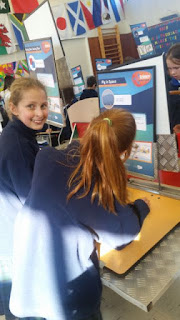As part of our A LIFE LIKE MINE unit, the senior Science Club made some simple water purification systems. It is a sad fact that not all children have access to clean running water.
We used layers of pebbles, coarse sand, fine sand and cotton wool balls or coffee filters to make our water purification systems. It was a good way to recycle old Sprite bottles too.
We made dirty water using mud from the field and then poured it slowly into our system to see how well the filter layers would work. We found that the filter using a coffee filter cleaned the water better than cotton wool, but overall both worked efficiently.


















